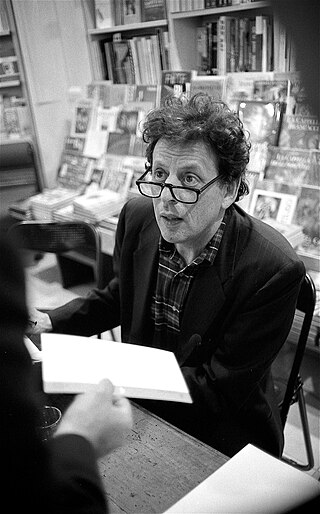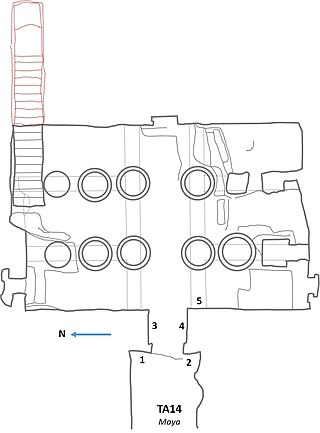
Aten also Aton, Atonu, or Itn was the focus of Atenism, the religious system formally established in ancient Egypt by the late Eighteenth Dynasty pharaoh Akhenaten. Exact dating for the 18th dynasty is contested, though a general date range places the dynasty in the years 1550 to 1292 B.C.E. The worship of Aten and the coinciding rule of Akhenaten are major identifying characteristics of a period within the 18th dynasty referred to as the Amarna Period.

Amarna is an extensive ancient Egyptian archaeological site containing the remains of what was the capital city during the late Eighteenth Dynasty. The city of Akhetaten was established in 1346 BC, built at the direction of the Pharaoh Akhenaten, and abandoned shortly after his death in 1332 BC. The name that the ancient Egyptians used for the city is transliterated as Akhetaten or Akhetaton, meaning "the horizon of the Aten".

Akhenaten, also spelled Akhenaton or Echnaton, was an ancient Egyptian pharaoh reigning c. 1353–1336 or 1351–1334 BC, the tenth ruler of the Eighteenth Dynasty. Before the fifth year of his reign, he was known as Amenhotep IV.

Nefertiti was a queen of the 18th Dynasty of Ancient Egypt, the great royal wife of Pharaoh Akhenaten. Nefertiti and her husband were known for their radical overhaul of state religious policy, in which they promoted the earliest known form of monotheism, Atenism, centered on the sun disc and its direct connection to the royal household. With her husband, she reigned at what was arguably the wealthiest period of ancient Egyptian history. After her husband's death, some scholars believe that Nefertiti ruled briefly as the female king known by the throne name, Neferneferuaten and before the ascension of Tutankhamun, although this identification is a matter of ongoing debate. If Nefertiti did rule as Pharaoh, her reign was marked by the fall of Amarna and relocation of the capital back to the traditional city of Thebes.

The Great Hymn to the Aten is the longest of a number of hymn-poems written to the sun-disk deity Aten. Composed in the middle of the 14th century BC, it is varyingly attributed to the 18th Dynasty Pharaoh Akhenaten or his courtiers, depending on the version, who radically changed traditional forms of Egyptian religion by replacing them with Atenism. The hymn bears a notable resemblance to the biblical Psalm 104.

Einstein on the Beach is an opera in four acts composed by Philip Glass and directed by theatrical producer Robert Wilson, who also collaborated with Glass on the work's libretto. The opera eschews traditional narrative in favor of a formalist approach based on structured spaces laid out by Wilson in a series of storyboards which are framed and connected by five "knee plays" or intermezzos. The music was written "in the spring, summer and fall of 1975." Glass recounts the collaborative process: "I put [Wilson’s notebook of sketches] on the piano and composed each section like a portrait of the drawing before me. The score was begun in the spring of 1975 and completed by the following November, and those drawings were before me all the time."

Meritaten, also spelled Merytaten, Meritaton or Meryetaten, was an ancient Egyptian royal woman of the Eighteenth Dynasty of Egypt. Her name means "She who is beloved of Aten"; Aten being the sun-deity whom her father, Pharaoh Akhenaten, worshipped. She held several titles, performing official roles for her father and becoming the Great Royal Wife to Pharaoh Smenkhkare, who may have been a brother or son of Akhenaten. Meritaten also may have served as pharaoh in her own right under the name Ankhkheperure Neferneferuaten.

Satyagraha is a 1979 opera in three acts for orchestra, chorus and soloists, composed by Philip Glass, with a libretto by Glass and Constance DeJong.

Atenism, also known as the Aten religion, the Amarna religion, and the Amarna heresy, was a religion in ancient Egypt. It was founded by Akhenaten, a pharaoh who ruled the New Kingdom under the Eighteenth Dynasty. The religion is described as monotheistic or monolatristic, although some Egyptologists argue that it was actually henotheistic. Atenism was centred on the cult of Aten, a god depicted as the disc of the Sun. Aten was originally an aspect of Ra, Egypt's traditional solar deity, though he was later asserted by Akhenaten as being the superior of all deities. In the 14th century BC, Atenism was Egypt's state religion for around 20 years, and Akhenaten met the worship of other gods with persecution; he closed many traditional temples, instead commissioning the construction of Atenist temples, and also suppressed religious traditionalists. However, subsequent pharaohs toppled the movement in the aftermath of Akhenaten's death, thereby restoring Egyptian civilization's traditional polytheistic religion. Large-scale efforts were then undertaken to remove from Egypt and Egyptian records any presence or mention of Akhenaten, Atenist temples, and assertions of a uniquely supreme god.

Panehesy was an Egyptian noble who bore the titles of 'Chief servitor of the Aten in the temple of Aten in Akhetaten'.

Amarna art, or the Amarna style, is a style adopted in the Amarna Period during and just after the reign of Akhenaten in the late Eighteenth Dynasty, during the New Kingdom. Whereas Ancient Egyptian art was famously slow to change, the Amarna style was a significant and sudden break from its predecessors both in the style of depictions, especially of people, and the subject matter. The artistic shift appears to be related to the king's religious reforms centering on the monotheistic or monolatric worship of the Aten, the disc of the Sun, as giver of life.

The Great Temple of the Aten was a temple located in the city of el-Amarna, Egypt. It served as the main place of worship of the deity Aten during the reign of the 18th Dynasty pharaoh Akhenaten. Akhenaten ushered in a unique period of ancient Egyptian history by establishing the new religious cult dedicated to the sun-disk Aten, originally an aspect of Ra, the sun god in traditional ancient Egyptian religion. The king shut down traditional worship of other deities like Amun-Ra, and brought in a new era, though short-lived, of seeming monotheism where the Aten was worshipped as a sun god and Akhenaten and his wife, Nefertiti, represented the divinely royal couple that connected the people with the god. Although he began construction at Karnak during his rule, the association the city had with other gods drove Akhenaten to establish a new city and capital at Amarna for the Aten. Akhenaten built the city along the east bank of the Nile River, setting up workshops, palaces, suburbs and temples. The Great Temple of the Aten was located just north of the Central City and, as the largest temple dedicated to the Aten, was where Akhenaten fully established the proper cult and worship of the sun-disk.

Songs from the Trilogy is a 1989 compilation album of songs from Philip Glass’ operas Einstein on the Beach, Satyagraha, and Akhnaten. Many of the songs on the album have been altered or shortened from their original composition.
Mahu was Chief of Police at Akhetaten.

The tomb of Meryra is part of a group of tombs located near Amarna, Upper Egypt. Placed in the mountainsides, the graves are divided into north and south groupings; the northern tombs are located in the hillsides and the southern on the plains. Meryra's burial, identified as Amarna Tomb 4 is located in the northern cluster. The sepulchre is the largest and most elaborate of the noble tombs of Amarna. It, along with the majority of these tombs, was never completed. The rock cut tombs of Amarna were constructed specifically for the officials of King Akhenaten. Norman de Garis Davies originally published details of the Tomb in 1903 in the Rock Tombs of El Amarna, Part I – The Tomb of Meryra. The tomb dates back to the 18th Dynasty.

Milagro Vargas is an American mezzo-soprano known for her distinctive voice and stage presence. She has appeared as an international soloist in operatic, orchestral, chamber music and recital settings.

Amarna Tomb 3 is a rock-cut cliff tomb located in Amarna, Upper Egypt. The tomb belonged to the Ancient Egyptian noble Ahmes (Ahmose), who served during the reign of Akhenaten. The tomb is situated at the base of a steep cliff and mountain track at the north-eastern end of the Amarna plains. It is located in the northern side of the wadi that splits the cluster of graves known collectively as the Northern tombs. Amarna Tomb 3 is one of six elite tombs belonging to the officials of Akhenaten. It was one of the first Northern tombs, built in Year 9 of the reign of Akhenaten.
The Amarna Era includes the reigns of Akhenaten, Smenkhkare, Tutankhamun and Ay. The period is named after the capital city established by Akhenaten, son of Amenhotep III. Akhenaten started his reign as Amenhotep IV, but changed his name when he discarded all other religions and declared the Aten or sun disc as the only god. He closed all the temples of the other Gods and removed their names from the monuments. Smenkhkare, then Tutankhamun, succeeded Akhenaten. Discarding Akhenten's religious beliefs, Tutankhamun returned to the traditional gods. He died young and was succeeded by Ay. Many kings did their best to remove all traces of the period from the records. The Amarna art is very distinctive: the royal family was portrayed with extended heads, long necks and narrow chests. They had skinny limbs, but heavy hips and thighs, with a marked stomach.

The Tomb of Panehsy is a sepulchre in Amarna, Upper Egypt. It was erected for the noble Panehsy who bore the titles the First servant of the Aten in the house of Aten in Akhet-Aten, Second prophet of the Lord of the Two Lands Neferkheprure-Waenre (Akhenaten), the sealbearer of the King of Lower Egypt, Overseer of the storehouse of the Aten in Akhetaten, Overseer of cattle of the Aten in Akhet-Aten.

May was an ancient Egyptian official during the reign of Pharaoh Akhenaten. He was Royal chancellor and fan-bearer at Akhet-Aten, the pharaoh's new capital. He was buried in Tomb EA14 in the southern group of the Amarna rock tombs. Norman de Garis Davies originally published details of the Tomb in 1908 in the Rock Tombs of El Amarna, Part V – Smaller Tombs and Boundary Stelae. The tomb dates to the late 18th Dynasty.


















